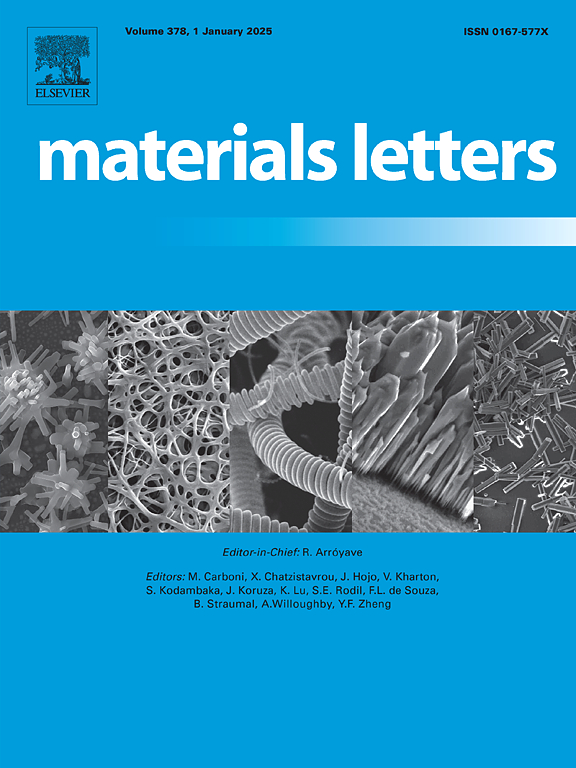A complementary precipitated mechanism of grain boundary α phases in metastable β titanium alloy
IF 2.7
4区 材料科学
Q3 MATERIALS SCIENCE, MULTIDISCIPLINARY
引用次数: 0
Abstract
In titanium alloys, the grain boundary α(αGB) phase constitutes a critical microstructural feature whose characteristics affect the mechanical properties of the alloys. However, current understanding of the αGB precipitation process remains incomplete, posing significant challenges in precisely controlling its morphology. In this study, we systematically investigated the morphological evolution of αGB during distinct precipitation stages and proposed a grain boundary curvature mechanism. During progressive step cooling, αGB phases initially nucleate at multiple sites along grain boundaries. Subsequently, αGB phases exhibit preferential growth toward one adjacent grain, thereby inducing localized curvature of the grain boundaries. The final stage involves coarsening and coalescence of αGB phases, accompanied by the precipitation of grain boundary Widmanstätte α (αWGB) colony at the αGB particle intersections or the αGB phase endpoints. This finding provides a more comprehensive framework for interpreting αGB precipitation sequence, but also a theoretical guidance for microstructure tailored strategies in advanced titanium alloys.

求助全文
约1分钟内获得全文
求助全文
来源期刊

Materials Letters
工程技术-材料科学:综合
CiteScore
5.60
自引率
3.30%
发文量
1948
审稿时长
50 days
期刊介绍:
Materials Letters has an open access mirror journal Materials Letters: X, sharing the same aims and scope, editorial team, submission system and rigorous peer review.
Materials Letters is dedicated to publishing novel, cutting edge reports of broad interest to the materials community. The journal provides a forum for materials scientists and engineers, physicists, and chemists to rapidly communicate on the most important topics in the field of materials.
Contributions include, but are not limited to, a variety of topics such as:
• Materials - Metals and alloys, amorphous solids, ceramics, composites, polymers, semiconductors
• Applications - Structural, opto-electronic, magnetic, medical, MEMS, sensors, smart
• Characterization - Analytical, microscopy, scanning probes, nanoscopic, optical, electrical, magnetic, acoustic, spectroscopic, diffraction
• Novel Materials - Micro and nanostructures (nanowires, nanotubes, nanoparticles), nanocomposites, thin films, superlattices, quantum dots.
• Processing - Crystal growth, thin film processing, sol-gel processing, mechanical processing, assembly, nanocrystalline processing.
• Properties - Mechanical, magnetic, optical, electrical, ferroelectric, thermal, interfacial, transport, thermodynamic
• Synthesis - Quenching, solid state, solidification, solution synthesis, vapor deposition, high pressure, explosive
 求助内容:
求助内容: 应助结果提醒方式:
应助结果提醒方式:


